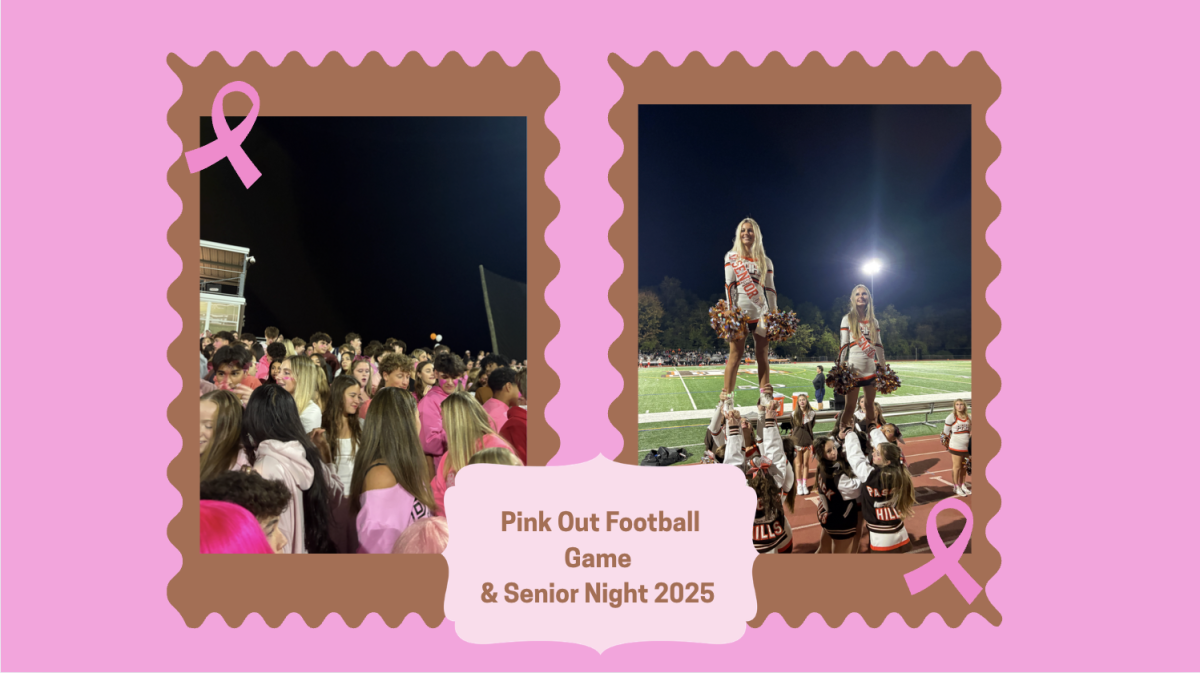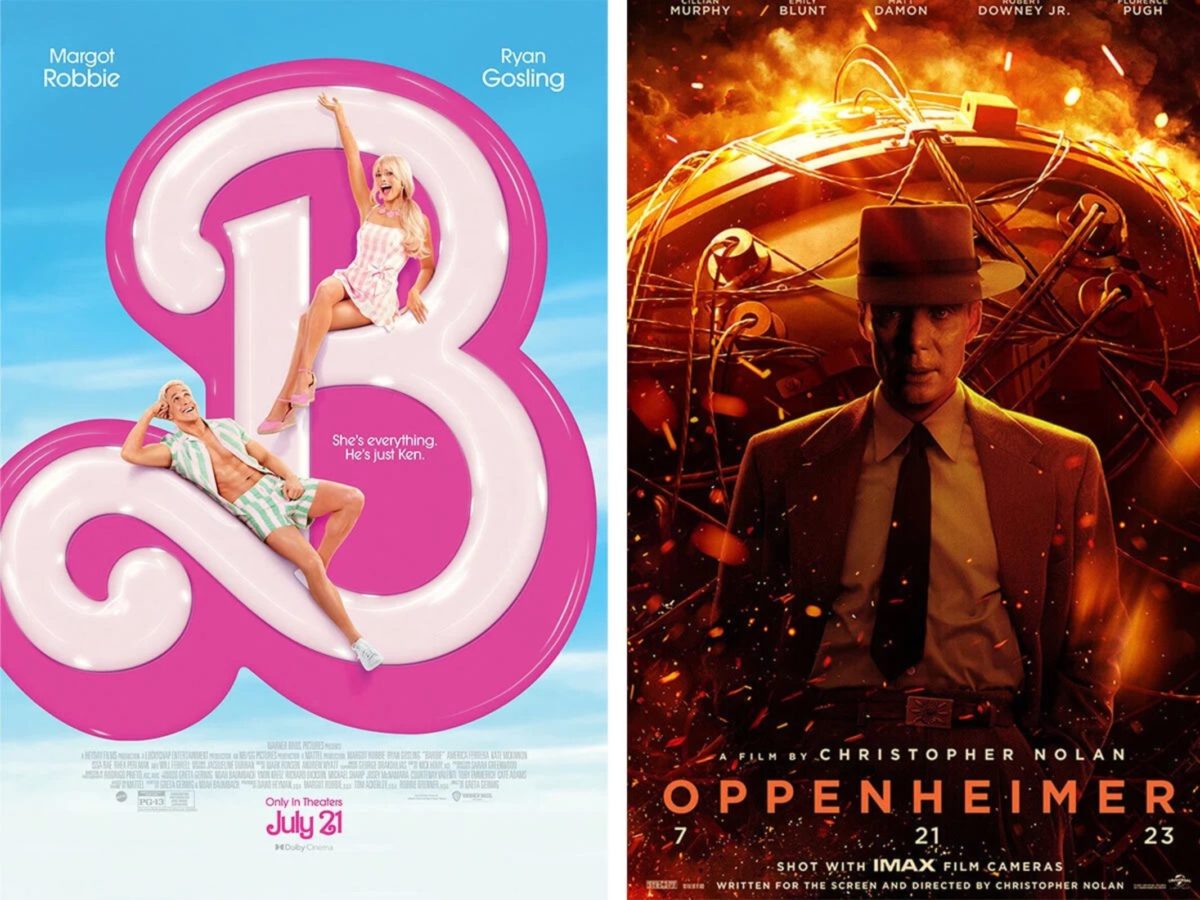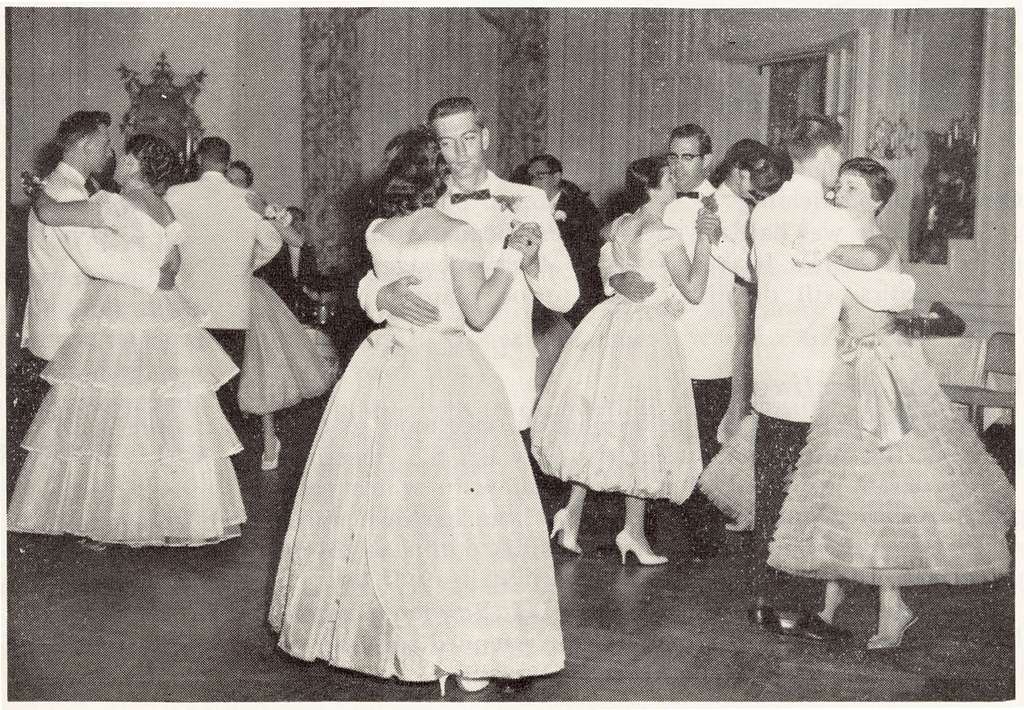The fate of the box office monumentally shifted on July 21 with the release of the arguably biggest summer blockbusters of the year: Greta Gerwig’s “Barbie” and Christopher Nolan’s “Oppenheimer.”
The combination of historical plots, multi-dimensional acting, and phenomenal scripts alike allowed the movies to make a splash among this summer’s theatrical releases. However, their nuanced elements placed both films on opposite sides of the Hollywood production spectrum.
Nevertheless, the debut of both films seemed to share one common factor: a loyal fanbase.
The internet craze “Barbenheimer,” a word initially coined in 2022 by Matt Neglia, the editor-in-chief of Next Best Picture, seemed to sweep the world before the films’ theatrical releases.
The contrasting elements between a matriarchal plastic universe radiating an outburst of pink displayed against a historical depiction surrounding American physicist J. Robert Oppenheimer’s contributions to the Manhattan Project served as a discrete juxtaposition.
Nonetheless, many underestimated the impact that the release of both films would bring to the box office.
A tremendous box-office record breaker, the “Barbenheimer” internet fanaticism soon evolved into an unforgettable occasion that would remain permanently etched into the motion picture books. Many movie-goers watched both films consecutively through double feature participation during opening weekend, with many preferring to watch “Barbie” second.
“Barbenheimer” started as a simple meme. However, it later evolved into a trend, consisting of handmade “Barbenheimer” T-shirts that pervaded through sites like Etsy and Redbubble, unique mashup social media posters created by influencers, and “Barbenheimer” themed costume celebrations that spilled into movie theaters globally.
The “Barbenheimer” movement can officially be described as a marketing strategy where two completely contrasting films are placed next to each other to draw attention to both, making movie-goers realize that both films are more alike than they are different, consequently boosting sales.
Despite approximately five hours of shared screen time between the two films in the theater, many movie-goers believe that the experience will last a lifetime, even resparking a pre-pandemic movie theater appreciation.
During their opening weekend of release, both films generated a total of $511 million at the box office. Warner Bros. “Barbie’s” unique marketing tactics, including a real Barbie Dreamhouse in Malibu, California, and agreements with fast food chains and other businesses, allowed the film to contribute $337 million globally, with Universal Studios “Oppenheimer” contributing the remaining $174 million.
Along with both films receiving countless awards and honors upon critic review, “Barbie” was recognized with the distinction of contributing to the most successful opening weekend of 2023 so far, with both movies contributing to the fourth-biggest weekend in history.
Additionally, both films showcased the most successful opening weekend at the box office since the release of “Avengers: Endgame” pre-pandemic in April 2019.
“It was a truly historic weekend and continues the positive box office momentum of 2023,” said Michael O’Leary, President & CEO of the National Association of Theatre Owners. “People recognized that something special was happening and they wanted to be a part of it.”
Greta Gerwig, the director of “Barbie,” was also accredited with the largest debut for a female director.
The recent strike taken by unionized Hollywood actors on July 14 and the Writers Guild of America (WGA) on May 2 in response to frustrations regarding compensation rates and working conditions has depleted the industry’s opportunities and resources.
Previous summer releases, such as DC’s “The Flash” and Disney’s “Indiana Jones and the Dial of Destiny,” generated a mixed response from audiences and critics globally, but “Barbenheimer’s” primarily positive public reaction seemed to ignite a change for the film industry to head in a brighter direction in response to their recent adversity.
The “Barbenheimer” internet craze provided movie-goers with a feeling that many hadn’t experienced since before the pandemic’s effects. Instead of choosing to select the conventionally preferred Netflix marathon, friends and families globally decided to reunite with their love for the movie theater by creating a sense of community indicated by group laughs, family photos, and delectable snacks that the pandemic eliminated.
“If these two movies were opening on the same day on rival platforms on streaming, I don’t think the Barbenheimer phenomenon would have taken hold,” said Paul Dergarabedian, a senior media analyst at Comscore, a company that tracks box office data. “It’s because of the cultural impact that movies in theaters have as opposed to streaming, which has a not any less significant, but a very different type of impact.”
Movie-goers haven’t recognized the sense of community generated by the “Barbenheimer” movement since millions made the pre-pandemic “Game of Thrones” watch party decision.
The theatrical success that “Barbenheimer” experienced in its opening weekend through an inadvertent boost in sales for both films seemed unparalleled by any past productions; Hollywood directors and filmmakers alike took an interest in this monumental phenomenon for future plans. Likewise, this great theatrical success was even further justified by the 200,000 movie-goers who purchased same-day tickets that flocked to theaters globally in response to the internet craze to watch these renowned summer blockbusters.
“This is an unequivocally great weekend for moviegoing,” said David A. Gross, an analyst that runs the movie consulting firm Franchise Entertainment Research. “‘Barbie’ and ‘Oppenheimer’ are complementing each other at the box office, not taking audiences from each other.”
Directed and co-written by the creatively spectacular Gerwing, “Barbie” stole the box office charts with an indefinite representation of pink thematically projected throughout the Barbie Land setting, even causing a pink shortage once their production concluded.
However, “Barbie” recompensed without falling short of its expectations by including an elite cast, script, props, and distinctive take on gender roles. A universe full of empowered women in leadership positions, Barbie Land is an excellent representation of feminism and female empowerment.
After experiencing a combination of bad breath, cold showers, flat feet, and sudden thoughts of death that ruin her consistent “Best Day Ever,” Stereotypical Barbie, played by the film’s producer and focal point, Margot Robbie, travels to the Real World; infatuated Stereotypical Ken, played by Ryan Gosling, accompanies her to the Real World to try to seek and attempt to achieve validation finally. Throughout their comedic journey, the two encounter laughs, exploration, and a little trouble along the way as they meet new faces.
However, upon entering the Real World, both Barbie and Ken learn about the consequences and truths of navigating through life.
Along with Barbie’s adventure to the Real World, the viewers meet Gloria, a Mattel employee played by America Ferrera, and her daughter Sasha, the owner of Robbie’s Barbie, played by Ariana Greenblatt.
A monologue regarding female adversity that Gloria presents in the film is one of the movie’s most climatic moments.
Along with the main cast, the film also includes many secondary characters that support the main characters, Barbie and Ken, played by Robbie and Gosling, respectively.
The female empowerment that is shown in Barbie Land is further displayed through the following significant positions that each Barbie holds within the society: President Barbie, played by Issa Rae; Nobel Prize-winning physicist Barbie, portrayed by Emma Mackey; author Barbie, played by Alexandra Shipp; Supreme Court Justice Barbie, portrayed by Ana Cruz Kayne; journalist Barbie, played by Ritu Arya; diplomat Barbie, played by Nicola Coughlan; doctor Barbie, portrayed by Hari Nef; and lawyer Barbie, played by Sharon Rooney.
The considerable variation of positions held by female figures within Barbie Land that promotes a sensation of communal connection and inclusion is an excellent representation of the brand’s slogan, “You Can Be Anything.”
The Kens of the film are also comically portrayed by greats that allow them to steal the show. Simu Liu, Ncuti Gatwa, Scott Evans, and Kingsley Ben-Adir are some of the film’s predominant Ken portrayals.
Dua Lipa and John Cena serve as Mermaid Barbie and Ken, respectively.
Michael Cera and Emerald Fennell are the sole versions of Allan and Midge, respectively, due to their discontinued production by Mattel.
The film also includes appearances from Jamie Demetriou as a Mattel employee; Dame Helen Mirren serves as the Narrator; Connor Swindells portrays Aaron Dinkins, an intern for Mattel; and Rhea Perlman acts as Ruth Handler, the inventor of Barbie who served as the first president of Mattel from 1945 until 1975.
The sensational and hilarious acting is also coupled with an elite soundtrack and spectacular clothing designs from many reputable faces: Jacqueline Durran, a two-time Oscar winner, led the costume design; Sarah Greenwood, a six-time Oscar nominee, led the production design; Rodrigo Prieto, a three-time Oscar nominee, served as the film’s cinematographer; and Noah Baumbach, Gerwing’s husband, served as co-screenwriter.
Contributions to the film’s soundtrack were also provided, with various soundtrack features supplied by A-lister artists, such as Dua Lipa, Nicki Minaj, Ice Spice, Billie Eilish, Lizzo, Sam Smith, and Gosling himself.
Gender roles and stereotypes are also explored in the film’s plot line as the depiction of gender positions in society represented in Barbie Land contradicts the gender roles displayed in the Real World; this can be justified by Barbie Land’s representation of women in positions of power and the Kens serving as “accessories,” which many young children initially treated them as.
However, the film’s Real World interpretation is primarily emphasized through the lack of diversity in Mattel executives’ solely male-populated conference room, including Will Ferrel’s portrayal of the Mattel CEO.
Barbara Millicent Roberts, nicknamed Barbie, was presented to the public by Mattel, Inc., on March 9, 1959, with the 11-inch plastic doll resembling the physical appearance of an adult woman, approximately 64 years before Greta Gerwig’s production of the classic doll hit the big screen.
Ruth Handler, the company’s co-founder, designed the doll to inspire her young daughter, Barbara, to chase her aspirations and believe she could achieve anything.
Nonetheless, in recent years, the toy has sparked controversy among some adults, with the belief that the doll is a representation of impossible perfection.
This perspective was employed in the Stereotypical Barbie doll’s features: long blonde hair, blue eyes, and an extremely thin body composition. In addition to their attempt to expand upon racial diversity, the Stereotypical Barbie doll has been previously criticized for its exaggerated features that could influence body dysmorphia and eating disorders in young children to convince them to change their bodies to fit an unattainable picture-perfect model.
Mattel, Inc. soon focused on this lack of diversity within the Barbie doll by implementing a greater variety of sizes, skin tones, and outfits in new Barbie doll collections.
These topics, along with mother-daughter dynamics, misogyny, and more, are just among the many complex issues explored throughout the movie’s plot line.
“Barbie,” produced by Warner Bros., has received a PG-13 rating from the Motion Picture Association for some explicit content that could seem inappropriate for children under 13.
“When we made this movie, we made it with so much hope and joy, and we hoped that people would go back to the movie theater and be together,” said Director of “Barbie,” Greta Gerwig.
Christopher Nolan’s take on the historical story of American physicist J. Robert Oppenheimer, played by Cillian Murphy, also struck the box office and received a positive reception from drastically impacted viewers.
“Oppenheimer,” produced by Universal Pictures, has received an R rating from the Motion Picture Association for some explicit content that could seem inappropriate for younger audiences, specifically those under 18.
Inspired by the 2005 biography written by Kai Bird and Martin J. Sherwin entitled “American Prometheus: The Triumph and Tragedy of J. Robert Oppenheimer,” Nolan’s construction of Oppenheimer’s life during World War II through Hollywood production allowed viewers to understand the quantum mechanics surrounding Oppenheimer’s soon regretted plan to design a weapon of mass destruction that would impact the world permanently.
The meticulously planned and researched historical film focuses on Oppenheimer’s journey through his creation of the Manhattan Project. Nolan’s brilliant execution of the historical retelling through Hollywood production perfectly follows each historical element.
The movie tracks Oppenheimer’s decision to transfer to Los Alamos, New Mexico, to further develop the World War II weapon that would later annihilate Hiroshima and Nagasaki, Japan, through calamitous bombings to arguably put an end to the persistent fatalities and misfortune that were enacted by the war.
The ominous mood that is conveyed throughout the visuals displayed in the 1945 Trinity Test enhances the surreality of the movie’s events.
The Hollywood film also doesn’t fall short with its cast either.
Matt Damon plays General Leslie Groves, who served as the military supervisor at Los Alamos, New Mexico, that sought to bring brilliant scientific minds together to develop a weapon strong enough for the United States to win World War II.
Benny Safdie portrays Edward Teller, who supports the belief in creating the hydrogen bomb, which would have seen even more deadly effects if used.
Gary Oldman’s film cameo as Harry Truman also delighted viewers through his portrayal of the former President of the United States who enlisted for the use of the bomb on Japan and for dismissing Oppenheimer’s reluctance.
Tom Conti, Josh Hartnett, and Kenneth Branagh portray well-known physicists with profound contributions to the scientific world, such as Albert Einstein, Ernest Lawrence, and Niels Bohr, respectively.
Florence Pugh mesmerized the audience by portraying Jean Tatlock, a psychiatrist who was sexually involved with Oppenheimer.
Emily Blunt dazzles through her portrayal of biologist Katherine “Kitty” Puening, Oppenheimer’s wife, an alcoholic suffering from postpartum depression.
Robert Downey Junior portrays Lewis Strauss, former head of the US Atomic Energy Commission and Oppenheimer’s nemesis, a politician focused on defaming Oppenheimer’s reputation after dropping the atomic bombs on Hiroshima and Nagasaki, Japan.
The brilliant mind behind “Oppenheimer,” Christopher Nolan has also directed previous fantastic works, such as “Memento,” “Inception,” and the “Dark Knight” trilogy.
Cinematographer Hoyte van Hoytema and production designer Ruth De Jong contributed significantly to the film’s authenticity regarding location selection and production decisions.
As of Aug. 11, “Barbie” has an 88% critic score and 84% audience score on Rotten Tomatoes, with a 7.4/10 on IMDb, with “Oppenheimer” having a 93% critic score and 91% audience score, with an 8.6/10 on IMDb.
“From a young age, I can remember playing with Barbies, specifically mermaid ones, which I eventually donated. I do think the Barbie film is a great representation of modern-day feminism because it allows little kids to believe that they can achieve their dreams and chase any career they want. The Barbie movie executes that,” said an anonymous rising Hills junior.
The film’s appeal to females was also evident in the audience demographic, with approximately 66% of film viewers identifying as female.
A Hills student offered their perspective on Oppenheimer’s alleged lack of diversity.
“Unfortunately, I have seen recent videos on my TikTok feed where indigenous groups speak out about the film’s lack of minority representation. On the other hand, the movie focused on depicting only one perspective, which unfortunately was hurtful to many,” said an anonymous rising Hills junior.
The “Barbenheimer” phenomenon was revolutionary for the film industry, and any other blockbusters may never match its dominance in the future. The movement reunited movie-goers with their love for the theater, which hadn’t been experienced since before the pandemic.
Sources:
https://time.com/6297101/barbie-oppenheimer-box-office-hollywood/
https://ew.com/movies/barbie-movie-cast-everything-to-know/
https://people.com/barbie-movie-soundtrack-everything-to-know-7560739
https://www.radiotimes.com/movies/barbie-movie-cast/
https://www.rottentomatoes.com/m/oppenheimer_2023
https://www.rottentomatoes.com/m/barbie
https://www.imdb.com/title/tt1517268/
https://www.imdb.com/title/tt15398776/
https://nypost.com/2023/07/19/oppenheimer-review-christopher-nolans-masterpiece/
https://www.avclub.com/barbie-movie-review-margot-robbie-greta-gerwig-1850646537
https://www.rogerebert.com/reviews/barbie-movie-review-2023
https://datebook.sfchronicle.com/movies-tv/gerwig-baumbach-margot-robbie-ryan-gosling-18197817
https://www.cnn.com/2023/07/24/business/barbie-oppenheimer-box-office-combined/index.html
https://www.npr.org/2023/07/13/1187310535/hollywood-actors-strike-sag-aftra
https://www.npr.org/2023/05/02/1172876800/writers-guild-calls-strike
https://time.com/6297101/barbie-oppenheimer-box-office-hollywood/
https://www.cbsnews.com/news/barbie-biggest-opening-day-2023-oppenheimer-not-far-behind/
https://www.vulture.com/2023/07/barbie-vs-oppenheimer-box-office-explained.html
https://www.empireonline.com/movies/features/how-barbenheimer-ruled-the-box-office/
https://comic-watch.com/movies/barbenheimer-a-phenomenon-worth-experiencing
https://www.cjr.org/the_media_today/the-barbenheimer-media-bonanza.php
https://collider.com/oppenheimer-historical-figures-ranked-accuracy/
https://www.thewrap.com/barbie-oppenheimer-barbenheimer-age-gender-demo/












































